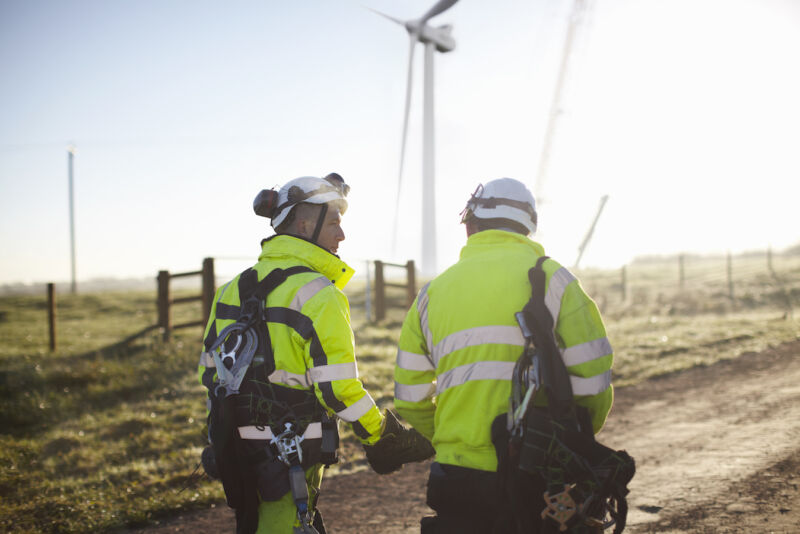Our electrical grid is changing rapidly. Gone are the days where the focus for planners is on centralised fossil fuel guzzling power stations; we are now in a period of accelerated transition, where our energy generation is increasingly decentralised and met by renewable sources whose energy output can be far more varied than their coal or gas predecessors.
Why is this happening? ‘Climate change’ is the two-word answer that forms the bedrock of this energy evolution, with 80% of the world’s CO2 emissions linked to the production and consumption of energy. The electrification of our energy matrix is the key to reducing this figure, with electricity proven to be 3-5 times more efficient than other sources of energy, making it the most efficient source and the best vector for decarbonisation when produced utilising renewable sources. In the UK, the power sector reduced its emissions by 65% between 2009-2019, largely by switching from coal-based energy generation to renewable generation. Nonetheless, there is still lots more needed from the sector if it is to achieve the goal of a fair, functional, and fully decarbonised electrical system by 2035.
The Industry Standard
July saw the release of two important reports, Future Energy Scenarios (FES) 2022 and the RIIO-ED2 Draft Determinations, both of which emphasise and echo the calls from the wider energy industry for the pillars of this transition to include flexibility and digitalisation. The annual FES reports are compiled by National Grid ESO to explore how the UK’s energy system could evolve between now and 2050 and examines the implications of the decarbonisation choices that are available. Comparatively, the RIIO-ED2 Draft Determinations document represents Ofgem’s proposed performance-based revenue and incentives model for Distribution Network Operators (DNOs) that will run from April 2023 to March 2028. This consultation document was released in response to and is based off the final Business Plans submitted by the DNOs at the end of 2021 and is designed to encourage the innovative delivery of a low-carbon energy system that provides value for consumers.
Both documents hold system flexibility and digitalisation as central to producing grids of the future. With an electricity grid that is increasingly dispersed geographically and varied in its supply, sources of flexibility, such as energy storage (e.g. battery storage), hydrogen production/storage, demand side response, and interconnectors, are becoming critical for maintaining a balanced and efficient electrical grid.
Equally, digital infrastructure is integral to building a smart future, making the invisible visible, driving efficiency and eliminating energy waste. Importantly, this process of digitalisation directly supports system flexibility, allowing operators to view and control their assets remotely, shifting operations and maintenance from a reactive to a proactive model. By facilitating a more stable, resilient, and efficient electrical grid, efforts to ensure flexibility and digitalisation are at the heart of our energy evolution not only deliver significant financial savings, but also dramatically reduce the power sector’s impact on climate change.
For RIIO-ED2, these tenets are expressed through the phrase ‘smart optimisation’, one that is continuously repeated throughout the document and involves widespread digitalisation and network visibility. Furthermore, new licence requirements mentioned in the draft determinations would ensure DNOs communicate their future flexibility requirements and detailed information about flexibility service procurement to Ofgem annually.
Likewise, FES 2022 urges a strategic, whole system thinking approach across linked sectors as we move towards a decarbonised electrical grid. This incorporates building an adequate demand side strategy that incentivises more flexible electricity consumption, long duration storage and early hydrogen uptake. Importantly, FES 2022 suggests this will need to encourage a shift away from current market signals that mean that flexible assets cannot contribute their full value to the system and may at times exacerbate network constraints. Digitalisation will be integral to this, enabling the more efficient workings of flexibility operations via tools that optimise dispatch and siting decisions of flexible capacity on the whole energy system.
Digitalisation: powering future power
As we enter the 4th electrical revolution (Electricity 4.0), and the digital and electric converge at scale, the principles of grid flexibility and digitalisation need to be placed at the heart of whatever we do, incorporating industry leading software with smart machines and the Industrial Internet of Things (IIOT). The electrical transition is a case of when not if, so constant innovation will be a catalyst for change.
As the Draft Determinations and FES 2022 show, the accelerating energy evolution is continuing on an upward trend, and we should be embracing it to not only keep consumers bills low and to ensure energy security, but also to produce an energy network that contributes to society’s decarbonisation project. Both legal and societal expectations are now forcing change in our electrical grids, those who act proactively will reap the biggest benefits and those who do not will be faced with increasing costs and restricted options. The choice, to me, seems a simple one.
Author: David Hall, VP Power Systems UK & Ireland, Schneider Electric




